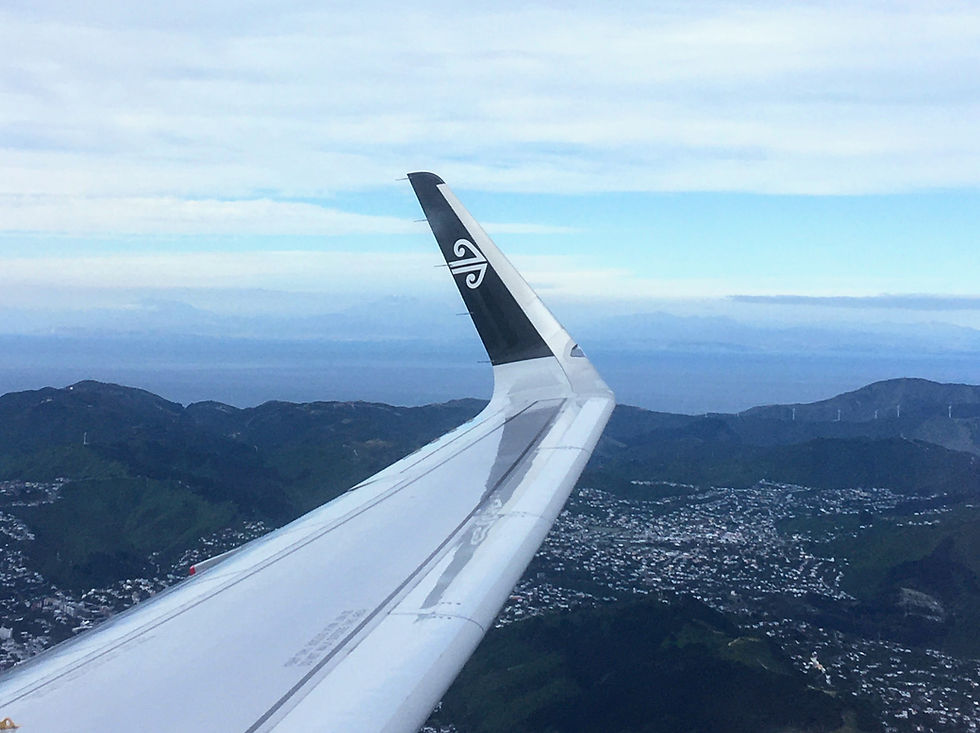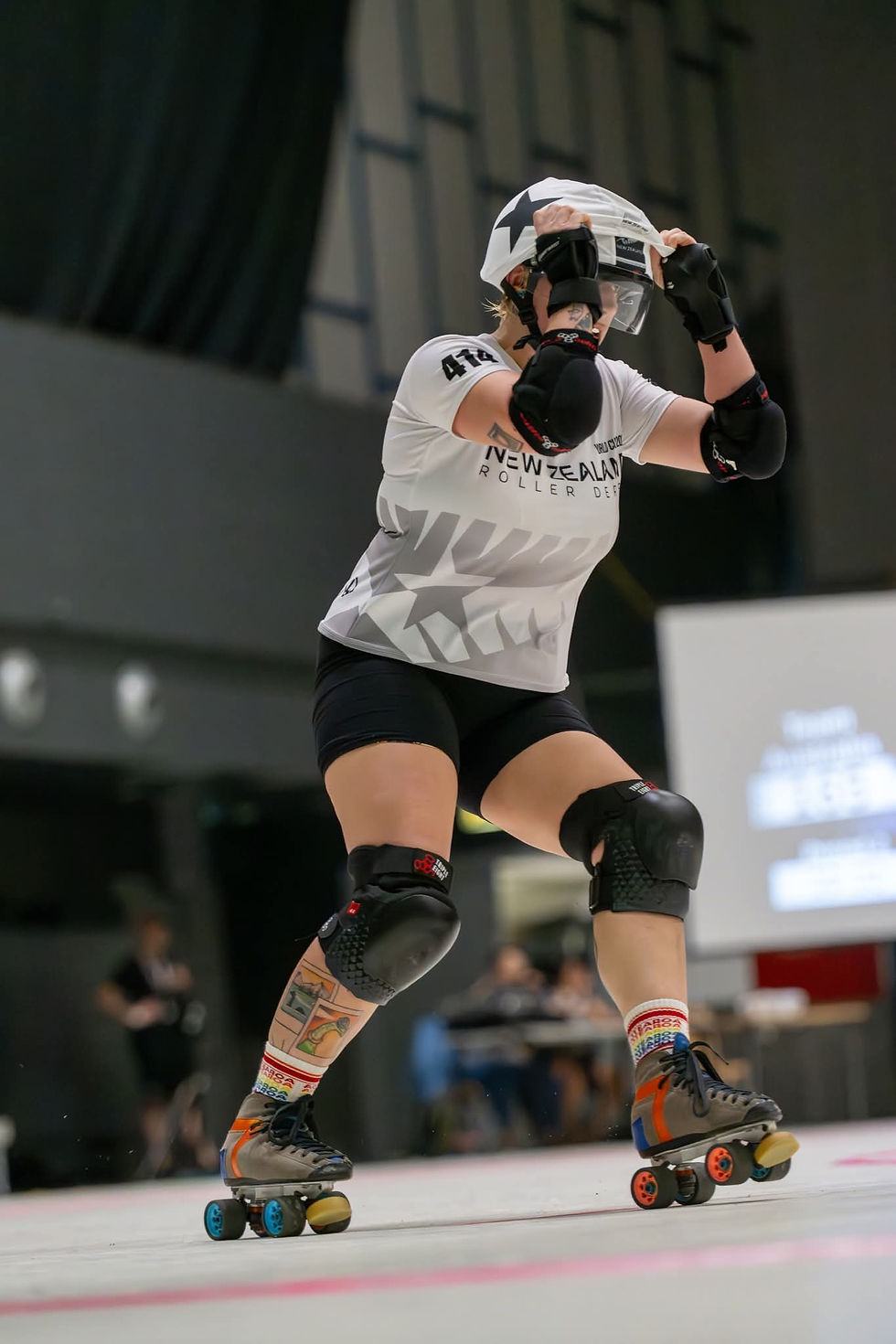iPRES Travel Advice: Tips for the Long-Haul Journey
- ipres20254
- Aug 11
- 6 min read
Local Organising Committee member, Carly Lenz, recently traveled from Wellington to Innsbruck, Austria and back after competing with Team New Zealand in the 2025 Roller Derby World Cup. Here are her top tips for long haul travel!

Guest post by Carly Lenz
I had the very great and unique privilege of representing Aotearoa New Zealand in the Roller Derby World Cup in Innsbruck, Austria in July this year. The trip was also my first time ever in Europe, which brought about some challenges and surprises during the travel stints there and back.

Here are some tips and takeaways that were helpful for me and that I hope can offer perspective while you’re planning your iPRES 2025 travels:
Find your happy place – or something close to it Travelling can often exist beyond one’s personal comfort zone; especially when you’re on flights that exceed six hours. It turns out that New Zealand is located a bit far from places that aren’t Australia, so it’s important that you recognise what you need to feel as comfortable as you can while on longer hauls of travel. I struggle to sleep, sit still or remain cosy for more than a couple of hours if I’m on an aircraft, which does not bode well when needing to cross an entire ocean to confabulate with international colleagues – or with roller derby teammates! There are a few items that help me maintain a semblance of freshness, comfort and rest when time is ticking away up in the clouds:
Compression socks – I would switch to wearing knee-length compression socks on the flights that were longest. They can help with circulation and can reduce inflammation when you are sedentary for periods of time.
Electronics – If you enjoy having electronics at your disposal on a flight, make sure that they’re working right before you leave. I made the rookie mistake of not checking the e-reader that I packed with me before lift-off, and I was shocked to find that I would be without my stories for 35 hours due to a technical error I could not resolve. The horror! In addition, if you have sensitive ears like I do but you rely on in-flight movies and entertainment to get you by, acquiring a pair of over-ear headphones (with an auxiliary cable) will be much more comfortable and reliable in the end if you’re able to get them. Some airlines are generous enough to provide recycled earbuds and headphones, but the material can be a bit rough for long durations.
Exercise – It sounds silly, but minimal exercise between bouts of sitting can do wonders on your physical state during travel. Even from a seat, you can roll your ankles, flex your feet, and stretch your hips by slowly lifting your knees independently and suspending them a few inches from your chair for several seconds. If your flight neighbours are kind enough to let you out, you can also have a stand or a brief wander up and down the aisle for some movement.
Handy accessories – A toothbrush, toothpaste, loose jumper and a spare change of clothes (or two!) are just a few conveniences that I would recommend packing in your carry-on luggage. Planes can be uncomfortable, cold, and yet somehow stuffy all at the same time. If you have the space in your bag, items like these will ensure that you can freshen up before the next leg of your journey.
Hydration body spray or mist – I travel with a carry-on-friendly sized spray bottle of hydration mist. Being in a pressurised cabin for several hours and transporting luggage across airports can leave one feeling dewy, and not in the fun, springtime-y way. A spritz of some hydration mist can moisturise and rejuvenate your skin when you need a boost. Also, lip balm!
Sleep aide – This is completely dependent on your relationship with supplements and natural aides, but I have found that a high-absorption magnesium can help me feel relaxed and sleepy, without fear of grogginess upon waking up. I tested magnesium intake from the safety and control of my home before travelling, so that I didn’t experience any undesirable effects while in the air.
Travel pillow – I made it a goal of mine on this recent trip to finally achieve some sleep on an overnighter. A huge contributing factor in this feat was an ergonomic travel pillow that acted like more of a supportive neck wrap, rather than a cushion to rest my weary head. It ended up being a game-changer because it kept my head and neck in place and stopped me from falling forward, which is always the hilariously embarrassing way in which I’m both abruptly forced out of sleep and exposed to my flight neighbour(s).
Data for days I highly recommend obtaining an eSim for your travels to Oceania. An eSim can be installed on your phone through QR Code activation and without the need for a physical card, simplifying the process of arranging mobile data for your adventures abroad. In some cases, the eSim will be associated with your personal phone number rather than be assigned a new travel number, but you can continue using messaging platforms like WhatsApp and Signal to stay in touch. Holafly and Skinny NZ are two services that offer eSim options at affordable prices – be sure to check that your mobile device is compatible before purchasing anything. My advice would also be to wait until you’ve touched down in New Zealand before activating your eSim so that you don’t lose out on any precious data – I know you’re excited but take an extra beat at the airport to ensure that it’s working, and then you’re good to go! Switching your phone to “Airplane Mode” rather than connecting to airport Wi-Fi when activating your eSim will make for an effective test.
Get in the zone
For points of reference, my travel route to Europe was Wellington > Sydney > Dubai > Munich and my return route was Vienna > Dubai > Melbourne > Wellington. All in all, each full flight path was about 35 hours, including some layover time in both directions. I will admit, the jetlag that I felt upon returning to New Zealand after my European holiday was a learning experience; if you are able to tack on a couple days before iPRES commences, I would highly recommend doing so. Giving yourself a buffer period to re-orient yourself in a new time zone, a new climate and a new environment (with new birdsong!) should help you feel awake and tired at relatively natural times.
When I landed in Munich after 35 hours of travel, it was the middle of the afternoon and it was a hot, summer’s day – as opposed to the chilly, wintry evening from whence I departed. Although I was exhausted at that stage, my mission was to rally and to stay awake and active until Munich nighttime fell upon the city. That way, I was more than ready to go to sleep and to regain some of the hours of slumber that I did not completely reach while airborne. If all goes according to plan, waking up at a semi-reasonable time in the morning is possible and you’ll feel readier to tackle the day.
If you are not in the position to add buffer time onto your conference travel, my previous advice can still apply. Do what you can to match your circadian rhythm to New Zealand Standard Time. Take a walk and get some fresh air when you arrive, and try as hard as you can to ward off any deep sleep until evening. Apps like Timeshifter can also help. When I returned from Europe, it took me a few days to not wake up at 4:00 in the morning but taking the time to be fully active and to wind down at sensible times is what truly helped me overcome the jetlag.
We've been there
It is not lost on the Local Organising Committee of iPRES 2025 that adventuring down to Aotearoa New Zealand is no easy task. Many of us have chosen to make Aotearoa New Zealand our home from other parts of the world, and know firsthand how far the journey can feel. It may even be the furthest that some of you will have travelled to date, and while that is very exciting, it can also be daunting. I hope that some of my reflections will help as we approach November – we’re very much looking forward to hosting you here! Mā te wā – see you soon!
